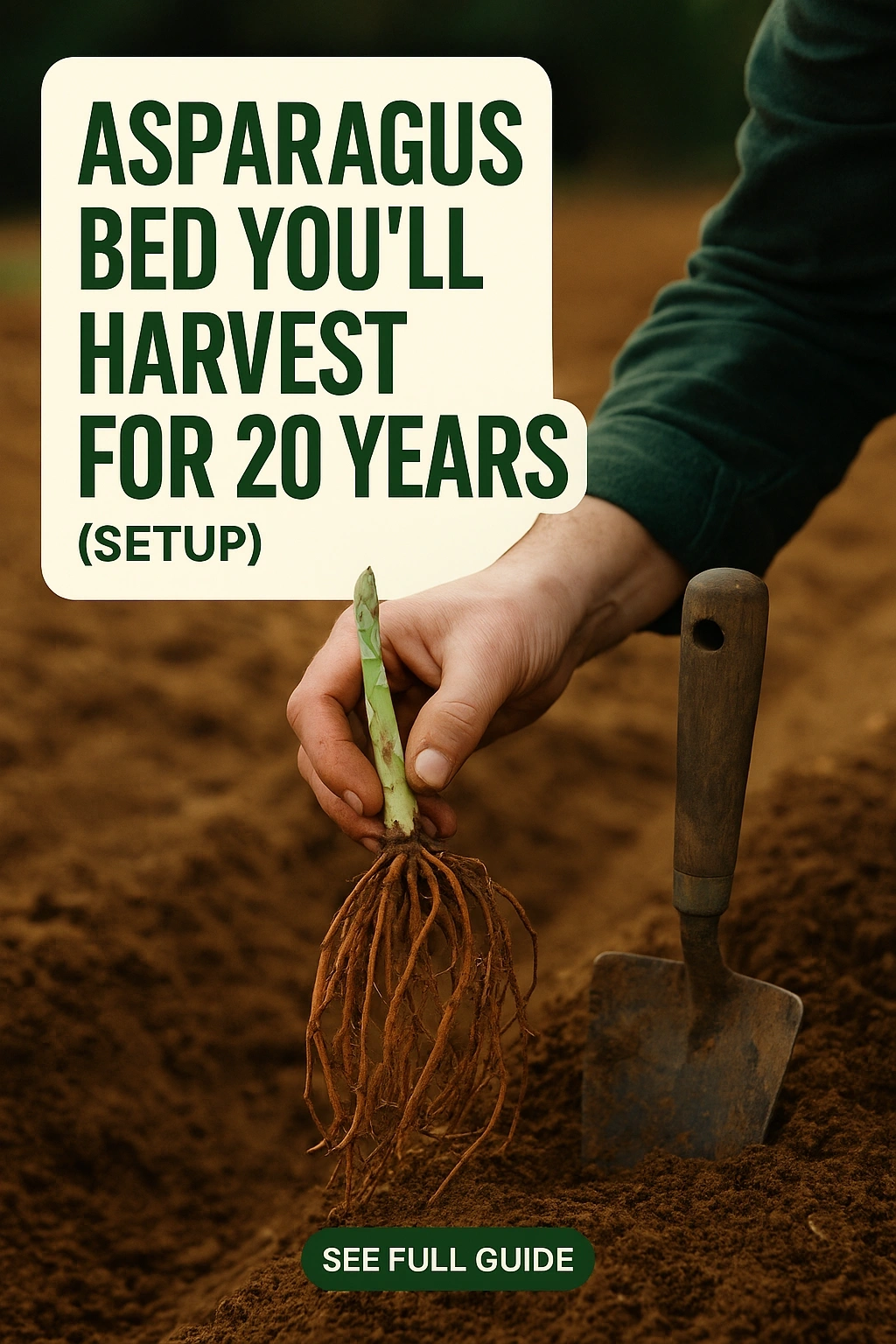
Imagine enjoying fresh asparagus from your own garden for two decades. Setting up an asparagus bed is a rewarding endeavor that requires careful planning and commitment. This article will guide you through the essentials of creating a sustainable asparagus bed, ensuring you cultivate healthy plants that produce bountiful yields year after year.
Understanding Asparagus: The Basics
Asparagus (Asparagus officinalis) is a perennial vegetable, meaning it returns each year without needing to be replanted. It thrives in well-drained soil and benefits from full sun exposure. With proper care, an asparagus bed can produce for 20 years or more, making it a valuable addition to your garden.
Choosing the Right Location for Your Asparagus Bed
Selecting the ideal spot for your asparagus bed is crucial for long-term success. Asparagus requires full sunlight, so choose an area that receives at least 6 to 8 hours of direct sunlight daily. Additionally, well-drained soil is essential to prevent root rot.
Soil Preparation and Quality
Before planting, assess your soil. Asparagus prefers sandy loam that is rich in organic matter. Conduct a soil test to check pH levels; ideally, the pH should be between 7.0 and 7.5. Amend your soil with compost and well-rotted manure to boost fertility and improve drainage.
Selecting Asparagus Varieties
There are several asparagus varieties to choose from, each with unique traits. Some popular choices include ‘Mary Washington,’ ‘Jersey Knight,’ and ‘Purple Passion.’ When selecting, consider your climate and desired flavor profile.
Heirloom vs. Hybrid Varieties
Heirloom varieties are often praised for their flavor and historical significance, while hybrid varieties may offer disease resistance and higher yields. Research and select the variety that best suits your needs and gardening conditions.
Planting Your Asparagus Crowns
Asparagus is typically planted from crowns, which are one-year-old plants. The best time to plant is in early spring, as soon as the soil can be worked. Plant crowns 12 to 18 inches apart in trenches that are 6 to 8 inches deep.
Spacing and Depth Considerations
Ensure the crowns are spread out adequately to allow for growth. Cover the crowns with 2 inches of soil, and as they grow, gradually fill in the trench with more soil. This method encourages healthy root development and prevents crowding.
Watering and Fertilization Practices
Watering is critical, especially during the first two years after planting. Asparagus requires consistent moisture but avoid waterlogging the soil. Fertilize your plants with a balanced fertilizer in early spring and again after harvesting to support growth.
Signs of Overwatering and Underwatering
Monitor your plants for signs of stress. Yellowing leaves may indicate overwatering, while wilting or browning may suggest underwatering. Adjust your watering schedule accordingly to maintain healthy plants.
Caring for Your Asparagus Bed
Proper care will enhance the longevity of your asparagus bed. Regular weeding is essential to reduce competition for nutrients. Mulching can help retain moisture and suppress weeds, promoting a healthier growing environment.
Pest and Disease Management
Asparagus can be susceptible to pests such as aphids and asparagus beetles. Implement integrated pest management strategies, including encouraging beneficial insects and using organic pesticides when necessary. Regularly check for signs of disease, such as rust or blight, to take prompt action.
Harvesting Your Asparagus
The first harvest should occur in the third year after planting. This waiting period allows the plants to establish strong root systems. When harvesting, cut spears at ground level when they reach 6 to 8 inches tall.
When to Stop Harvesting
Limit your harvest to 2-3 weeks in the third year and gradually increase in subsequent years. By the fifth year, you can harvest for 6-8 weeks. Always leave some spears to grow into ferns, as this helps feed the roots for future growth.
Preparing for Winter Dormancy
Asparagus plants will enter dormancy in the winter months. Cut back the ferns to about 2 inches above the ground after they have turned yellow in the fall. This practice helps prevent disease and prepares the bed for the next growing season.
Winter Mulching Techniques
Applying a layer of mulch can protect the crowns from extreme cold. Use straw, leaves, or wood chips to insulate the soil and retain moisture. This practice helps ensure a healthy start to the next growing season.
FAQs
How long does it take for asparagus to produce?
Asparagus typically takes about 2-3 years after planting crowns to produce a substantial harvest. Patience is key, as it allows the plants to establish strong roots.
Can I grow asparagus in containers?
Yes, asparagus can be grown in containers, but ensure the pot is deep enough (at least 12 inches) and has good drainage. Regular watering and fertilization will be crucial in a container setting.
What is the best time to plant asparagus?
The best time to plant asparagus is in early spring, as soon as the soil can be worked. This timing allows the plants to establish before the heat of summer.
How should I care for my asparagus bed during the summer?
During the summer, ensure consistent watering and monitor for pests. Weeding is also essential to reduce competition for nutrients. Fertilization in early summer will support ongoing growth.
Can asparagus grow in partial shade?
While asparagus can tolerate partial shade, it thrives best in full sun. Insufficient sunlight can lead to weaker plants and reduced yields.
By following these guidelines, you can establish a thriving asparagus bed that will yield delicious harvests for years. With patience and care, your investment in time and effort will pay off, providing you with fresh asparagus to enjoy season after season.
